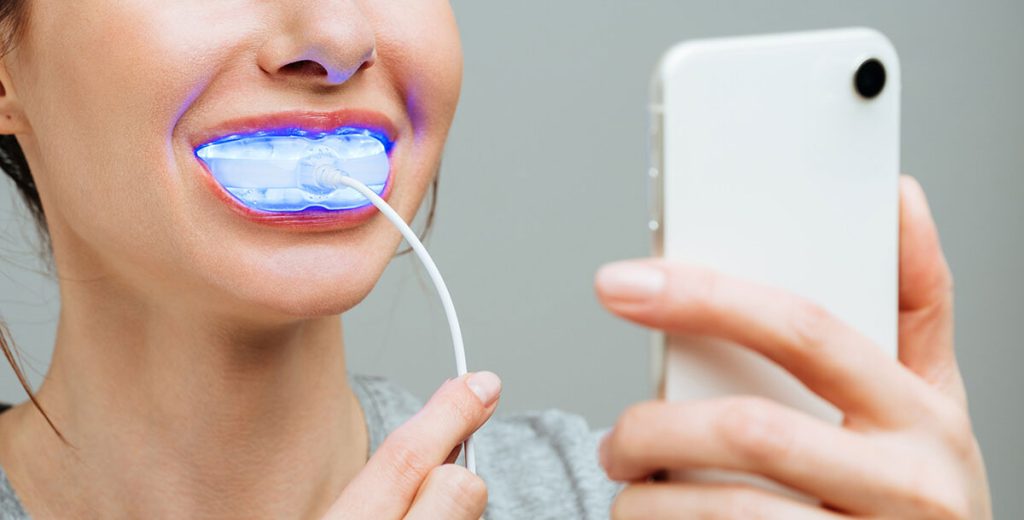Overview
There is a wide range of whitening options in the pursuit of a whiter smile, whether it is a convenient, sensitivity-friendly, or even a professionally-applied whitening technique. If you’re also considering straightening your teeth, searching for Invisalign near me
can help you find a provider who offers both whitening and alignment solutions. All the methods differ in their speed, efficacy, comfort, and pricing.
● Whitening Strips (Hydrogen Peroxide-based)
Most of the over-the-counter whitening strips contain a hydrogen peroxide gel, which is applied to upper and lower teeth twice a day (each time the strip takes approximately 30 minutes). They usually whiten teeth in one to two weeks by a few shades and their outcome would last about five to six months. With these kits, one can easily adjust brightness in the home.
● Tooth Whitening
A trip to a dental expert is still one of the quickest and surest means of whitening your teeth. The products employed by dentists are more powerful and professional, able to make teeth appear eight shades lighter during one appointment. Although it is impressive, powerful agents can cause sensitivity or gum irritation, in particular, when your teeth or gums are sensitive to pain.
The most common alternatives in a professional setting are:
● Hydrogen Peroxide Whitening Gel
The whitening gel is then applied with the protection of gums and polishing of teeth. Precisely, the gel is applied to enamel and left to work up to an hour though usually in the presence of the supervisor as a precaution and to ensure comfort.
● LED Light Hydrogen Peroxide
The technique involves the use of the peroxide gel in conjunction with a specialised LED light that speeds the breakdown of stains. It works especially well on stubborn surface staining.
● Custom Take-Home Trays
The dentists make a mould or a scan of your mouth to make the moulded trays. The whitening agent is applied by yourself, usually for several hours or overnight a few days in a row. It is a combination of professional oversight and the comfort of the home and long-term performance.
Pros and Cons of Methods Comparison
● Speed & Effectiveness
Professional in-office bleaching is very dramatic in effect and in many cases can be achieved in just one appointment. Trays and strips used at home take more time to be used and may whiten teeth more slowly.
● Safety & Sensitivity
The more powerful professional treatments are much more powerful in whitening, though they can lead to temporary sensitivity or irritation of the gums. Low concentration (e.g. 6% hydrogen peroxide or about 10% carbamide peroxide) at-home gel is usually milder, but may require more frequent application.
● Convenience
At-home strips are simple to operate and set up.
•Trays worn at home offer professional-level whitening and also the home comfort of treatment in the comfort of home. The in-office treatments involve longer dental visits and time in the chair but they give quicker results.
Other Approaches and Natural Methods:
- Whitening toothpaste can clean surface stains but can only provide a slight change, usually less than what a strip or tray treatment would provide.
- Homemade solutions such as baking soda or hydrogen peroxide solution in toothbrushes can whiten more modestly however, overusing them can cause sensitivity or even damage enamel.
Side Effects and Risks:
The majority of whitening methods have similar side effects:
● they cause temporary sensitivity of teeth and possible irritation of gums, particularly those with a higher concentration of peroxide. These symptoms tend to disappear in a matter of days.
● Lightening can be uneven among teeth and the early whitening effect can fade with time particularly when teeth rehydrate or come into contact with food that can produce stains.
What Experts Suggest
The dental professionals in various sources insist that the most effective combination of safety, efficacy, and long-term outcomes is achieved with custom-fitted trays and peroxide-based gels, which are directed or performed under or with the supervision of a dentist. The approach is powerful and yet sensitive, controlling and low-risk to enamel and gums.

